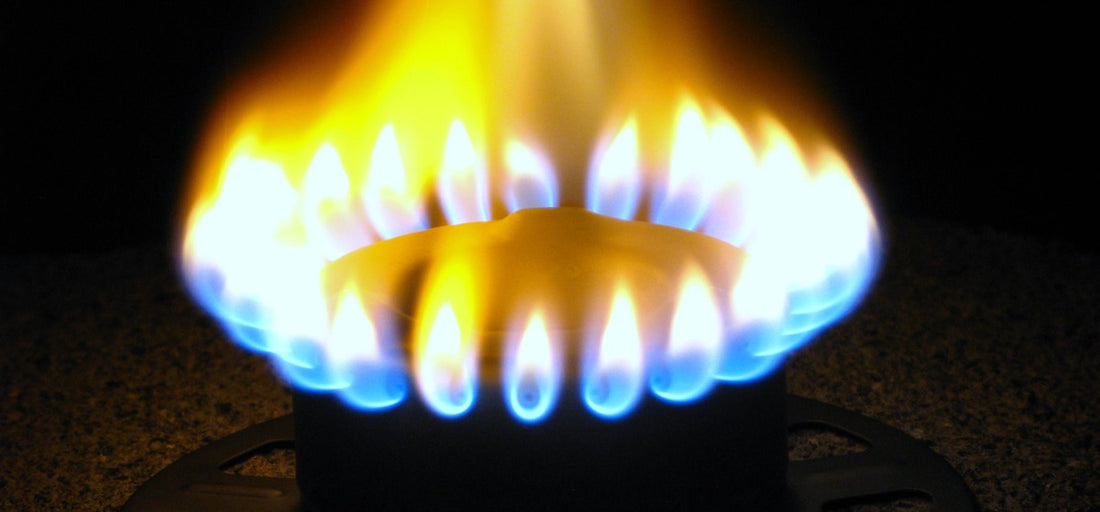There is certainly a trend toward using alcohol stoves for backpacking, so I wanted to review some of the advantages, disadvantages, and considerations in order to help the novice backpacker understand why an alcohol stove may or may not be the best choice.
Vargo Triad Alcohol Stove Demo
General Principles
Alcohol stoves are different from other popular backpacking stoves – such as white gas stoves, iso-butane canister stoves or propane camp stoves – in that the fuel is not pressurized. White gas stoves require a fuel bottle that needs to be pumped while iso-butane and canister stoves use pressurized containers from the factory. Alcohol, on the other hand, develops pressure once the fuel is lit and allowed to heat naturally to the point that it becomes a gas. This priming process generally takes just a minute or so but is affected by outside temperature which is why alcohol stoves can be difficult to light in colder temperatures. Once lit however, they will operate just fine. Also, after being lit you will find that the greatest heat output occurs in the beginning and gradually decreases as the fuel level drops. Fortunately, this corresponds with how most outdoor cooking naturally occurs – intense heat in the beginning to bring the water to a boil and then decreased heat toward the middle and end to actually cook your food.
Advantages and Disadvantages
Alcohol backpacking stoves are designed to prepare a single entrée meal. Because of limited heat output, it will be difficult to muster enough heat for a pot larger than two liters. On the other hand, if you are cooking just for yourself, using between a 750 ml ~ 2 liter pot, an alcohol stove will work great to get the job done efficiently. As a rule of thumb, one ounce of fuel will burn for about ten minutes. Ten minutes are generally enough time to rehydrate noodles or cook a backpacking meal. Depending on the number of times you plan to cook each day (dinner only –or- both dinner and breakfast) you can determine the amount of fuel you will need for a given trip. I generally recommend an 8 ounce fuel bottle with a flip-top cap which will allow for easy filling.
The primary advantage of alcohol stoves are their low weight. Obviously any time you have to carry gear, weight is of the utmost importance. Most alcohol stoves weigh between 0.5 and 2 ounces while most white gas stoves weigh around 16 ounces or more. Comparatively speaking, you could carry 16 alcohol stoves for one white gas stove!
Another advantage is simplicity. With few moving parts, or the complete lack thereof, there is less chance for damage, additional costs (repair and weight–no need for a repair kit!), and frustration due to the stove not working. As long as the material used to make the stove is sturdy and can withstand intense heat – such as titanium or other durable materials – you can rely on its performance.
Lastly, my eyebrows have been singed from white gas “explosions” a number of times and it is never a pleasurable experience. Alcohol is much less volatile and will not explode even if you hold a match directly above it. However, an alcohol flame is difficult to see in sunlight. I have heard many stories of people thinking that a stove is extinguished and then attempted to add more fuel, (although the stove was in fact still lit) resulting in the flame traveling back up into the fuel bottle and exploding. The lesson is to be absolutely sure the flame is out before trying to refuel. You will hear a hissing sound for 10 to 15 seconds immediately after you extinguish the flame. The hissing sound is the result of the gas produced from the still hot stove. If you attempt to relight the stove too quickly, the fumes that are still being generated from the hot stove have the potential to explode. Wait a minute or so before adding more fuel and err on the side of caution.
Taking the above into consideration, I recommend alcohol stoves for backpacking as they are are one of the best options currently available. While other systems will prepare your food faster, I have never been in a rush to hurry up and eat in the outdoors.
To see some of the alcohol stoves I’m talking about and have designed click here…
…or to learn more about alcohol stoves in general visit Zen and the Art of the Alcohol Stove.
